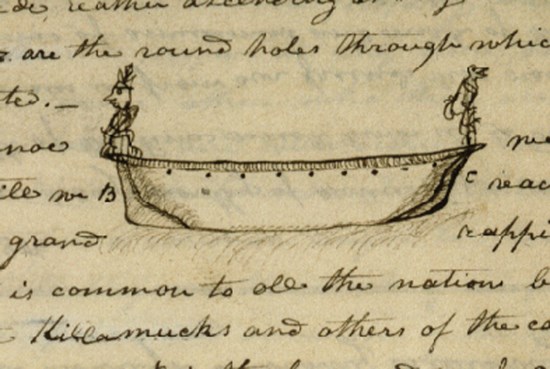Last updated: November 28, 2023
Article
Chinook Canoes

American Philosophical Society
“I have seen the natives near the coast riding waves in these canoes with safety and apparently without concern where I should have thought it impossible for any vessel of the same size to lived a minute. . . .
a person would suppose that the forming of a large canoe with an instrument like this was the work of several years; but these people make them in a few weeks. they prize their canoes very highly; we have been anxious to obtain some of them, for our journey up the river but have not been able to obtain one as yet from the natives in this neighbourhood.—”—Meriwether Lewis, February 1, 1806
Chinookan people are expert canoeists. For generations upon generations, they have passed down knowledge of traveling on the Columbia River and the many nearby rivers, streams, estuaries, and open ocean waters.
Meriwether Lewis and William Clark so admired Chinook canoes that they stole one at Fort Clatsop (after offering inadequate trades for one of these valuable vessels).
Chinook canoes had holes in the sides, to put crossbars through. This made it easier to carry the canoes over one’s shoulders when on land. Some canoes were over fifty feet long and carried twenty to thirty people, plus cargo. They were decorated with artistic representations of animals, either carved, painted, or waxed on the bows and sterns.
To steer one of their canoes, Chinookan people have one person sit in the back and use a paddle as a rudder, to steer the boat. Everyone else paddles while kneeling in the canoe, with their bottoms resting on their heels.
Generations of knowledge about the river went into how Chinookan people designed their canoes. They knew how to shape it to best keep the canoe afloat, knew which cedar trees made the best boats. This knowledge is something Lewis and Clark could not replicate or steal during their short trip to the area.
